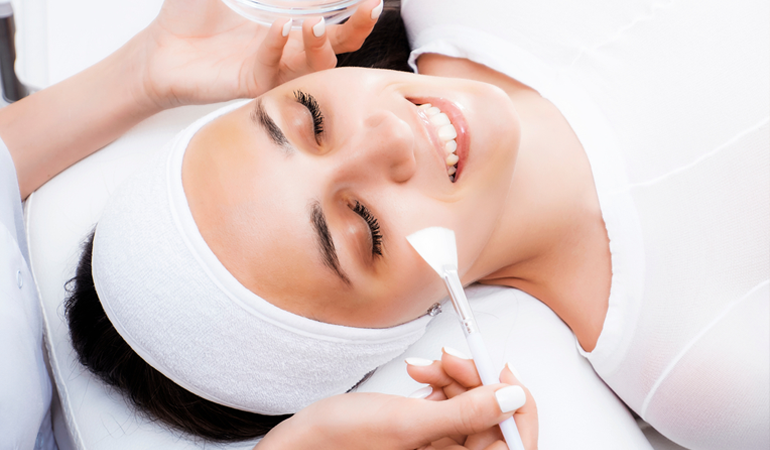Chemical Peels
A chemical peel uses a chemical solution to remove layers of skin, revealing the more youthful skin underneath. Chemical peels can reduce or improve fine lines and wrinkles, acne, scars, uneven skin coloring and other skin imperfections. Different chemicals determine the depth of your peel and type of skin condition treated.

A chemical peel is a procedure in which a chemical solution is applied to the skin to remove the top layers. The skin that grows back is smoother. With a light or medium peel, you may need to undergo the procedure more than once to get the desired results.
Chemical peels are used to treat wrinkles, discolored skin and scars — usually on the face. They can be done alone or combined with other cosmetic procedures. And they can be done at different depths, from light to deep. Deeper chemical peels offer more-dramatic results but also take longer to recover from.
Benifits of Chemical Peels
These customized chemical peels can help change your skin, address problematic skin conditions, and help you get perfect skin, or at least the next best thing. Depending on which type of peel you choose, you can schedule them monthly, bi-monthly, or as needed to keep your skin clear and vibrant. Chemical Peels treat various skin issues:
- Fine lines and wrinkles
- Acne
- Hyperpigmentation
- Sun Damage
- Tone & Texture
- Clarity
Chemical Peels FAQ's
Chemical peeling agents resurface the skin by inducing a controlled wound and thus removing superficial layers of the skin. As a result, chemical peels promote the growth of a new healthy top skin layer and improve skin problems like hyperpigmentation, fine lines and wrinkles, uneven texture and skin impurities.
- One week before the peel avoid waxing, electrolysis, deploritory creams, and laser hair removal.
- Two to three days before the peel discontinue using any prescription topicals such as Retin-A, differin or Tazorac, as well as any products containing retinol, alpha hydroxyl acids (AHA), beta hydroxyl acids (BHA) or benzoyl peroxide.
- Patients who have had any medical cosmetic facial treatments or procedures such as Laser treatments, cosmetic fillers or other surgical procedures should wait until skin sensitivity has completely resolved before receiving a peel.
- Chemical peels should be avoided if any of the following conditions are present:
- Active cold sores, herpes simplex or warts in the area to be treated
- Wounded, sunburned or excessively sensitive skin
- Accutane use within the last year
- History of recent chemotherapy or radiation therapy
- Allergies to aspirin
- Women who are pregnant or actively breastfeeding
- Patients with Vitiligo
- Patients with a history of autoimmune disease (such as rheumatoid arthritis, psoriasis, lupus, multiple sclerosis etc) or any condition that may weaken their immune system